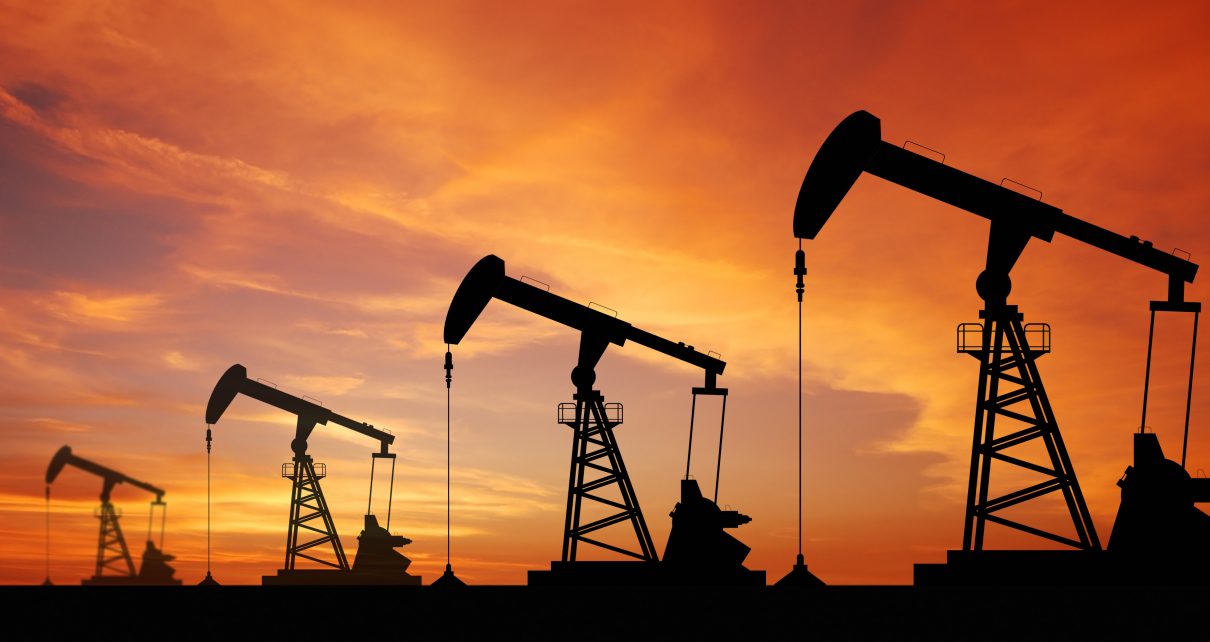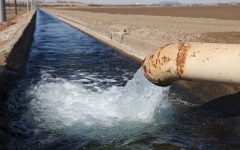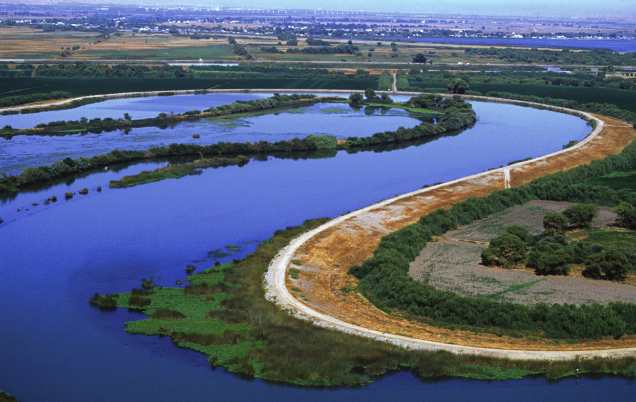
Oil rigs in the sunset. (Photo: Thaiview/Shutterstock)
Ringside: Sacramento’s War on Water and Energy
In February California’s oil and gas regulators released their plan to ban all fracking
By Edward Ring, April 4, 2024 7:10 am
 After the deluges of 2022-23, and the rainfall season so far this year delivering an above normal snowpack and above normal rain, the drought in California is over. Even the situation on the dry Colorado is much improved, with Lake Powell and Lake Mead collectively at 42 percent of capacity, up from only 32 percent of capacity at this time last year.
After the deluges of 2022-23, and the rainfall season so far this year delivering an above normal snowpack and above normal rain, the drought in California is over. Even the situation on the dry Colorado is much improved, with Lake Powell and Lake Mead collectively at 42 percent of capacity, up from only 32 percent of capacity at this time last year.
The reservoirs are full, and there’s snow in the mountains, but California’s farmers are still getting squeezed. The federal allocation to farmers in California’s vast Central Valley is held to 35 percent of the contracted amount, and the state water project allocation is only at 30 percent. As a result, millions of acres of farmland are going to remain fallow this year.
California has historically delivered 50 percent of the total fruit and vegetables produced in the entire country. But consumers in California are increasingly finding imported food products in their grocery store aisles, including produce easily grown here: avocados from Mexico, apricots and grapes from Chile. In 2020, imports of agricultural products into California reached nearly $10 billion, against exports of $13.4 billion.
While California so far can at least claim to be a net food exporter, it lost self-sufficiency in energy decades ago. Despite impressive reserves of natural gas and crude oil, California imports 74 percent of its crude oil and over 90 percent of its natural gas. California’s annual in-state production of crude oil is less than one-third what it was in 1985.
It isn’t as if we don’t need this fuel. After decades of exhausting attempts to push renewables, in 2021 according to the US EIA the state still derives 45 percent of its energy from petroleum products and another 31 percent from natural gas. Those percentages would be even higher, but included in the denominator is another 9 percent of total energy consumption represented by electricity imported from other states.
With agriculture, Sacramento’s indifference to the plight of farmers can be explained economically. “Agriculture, Forestry, Fishing and Hunting” represents a paltry 1.5 percent of California’s $3.0 trillion GDP. Not a ton of clout there, and that explains a lot.
The same argument can made for oil and gas. According to an authoritative 2019 report from the Los Angeles County Economic Development Corporation, the oil and gas industry in California “generated $152.3 billion in total economic output, making up 2.1 percent of California’s overall gross state product in 2017.”
Numbers matter. Farming and logging, 1.5 percent of GDP. Oil and gas, 2.1 percent of GDP. Who cares?
This is the economic context in which to view the latest legislative and regulatory assaults on farming and fossil fuel. These industries are dwarfed in size by such heavyweights as information technology at 10.5 percent of state GDP, government at 11.6 percent, “professional services” at 14.2 percent, and the almighty financial sector at 19 percent. The attacks are unrelenting, because in California, “big ag” and “big oil” are actually not so big at all. They’re getting bullied into oblivion.
In February California’s oil and gas regulators released their plan to ban all fracking, after already having banned issuance of new fracking permits. And then in March environmental groups began pressing CalGEM (California’s state “Geologic Energy Management Division”) to also ban what is known as steam injection, another method of oil extraction that is widely used in California.
Now if wishes were megawatts, and dreams could fuel our vehicles, there would be no consequences as California’s remaining active oil wells are capped, and its natural gas power plants are decommissioned. We can continue importing solar cells and wind turbines from China, and to the extent we still require that filthy fossil fuel, we can continue to let nations in the Middle East and South America ship it to us in tankers that in 2023 spewed an estimated 1.7 million metric tons of CO2 into the atmosphere just getting it to our shores.
Ditto for those apricots and avocados. We can export cell phone apps, movies, and “services,” and let those less finicky foreigners get their fingernails dirty growing food, extracting energy, manufacturing actual things. But California’s legislators, regulators, and smug litigators may hope there is never again a global hiccough that disrupts the imports of those necessities we are too “developed” to produce ourselves. Because you can’t eat software apps, and you can’t drink movies.
- Ringside: Will Advocates for More Water Supply Projects Find Unity? - December 11, 2025
- Ringside: EVs and California’s Future Demand for Electricity - December 4, 2025
- Ringside: Politically Viable Water Supply Projects - November 27, 2025





Thank you for the numbers. While farming and energy are currently small in comparison potatoes in terms of the overall current economy that is because there has been an organized effort to minimize them. By “outsourcing” these commodities in favor of economic areas that do not produce basic essentials Californias leaders are setting the state up for a major collapse which are already seeing in all areas of society now. Without the ability to provide enough energy and food (building blocks of society) we are left to the whims of those that provide those essential products. California is learning that lesson the hard way. Fortunately, after we finish bottoming out, I believe that a revival in all areas of society will occur that will bring about better days for all Californians.
Unfortunately, by the time CA finishes bottoming out, we won’t know how to rebound. As companies and professionals leave the state, so does their knowledge and experience. I think companies will be reluctant to reenter the state due to all the regulations and taxes that might even be applied to their operations outside the state.
Liking your optimism Hal.
Without farming and energy you have cave man hunter gathering which equals a population of a few thousand people in the entire state.
energy and water are intimately linked: ~20% of electricity in California goes to pumping water according to the Public Policy Institute. SoCal is especially vulnerable with most of the consumption pumped over the Tehachapi Mtns. or from Colorado River a good distance.
And while the percent of GDP attributed directly to O/G and/or water the indirect contributions are strategically important: many industry and commercial sectors rely on the outputs to enable their own outputs.
Finally, as Mr. Ring notes California is increasingly a service economy (as opposed to say manufacturing) and as a result is much more volatile, and making state tax revenues more volatile as well.
1. Scarcity gives the Dem Party more power and control.
2. They and their cronies make lots of money off scarcity and green crony capitalism.
3. The Dem Party hates our country and hates our people. They “learned” that in college. They want to assuage their liberal guilt not by reducing their standard of living but by reducing ours.